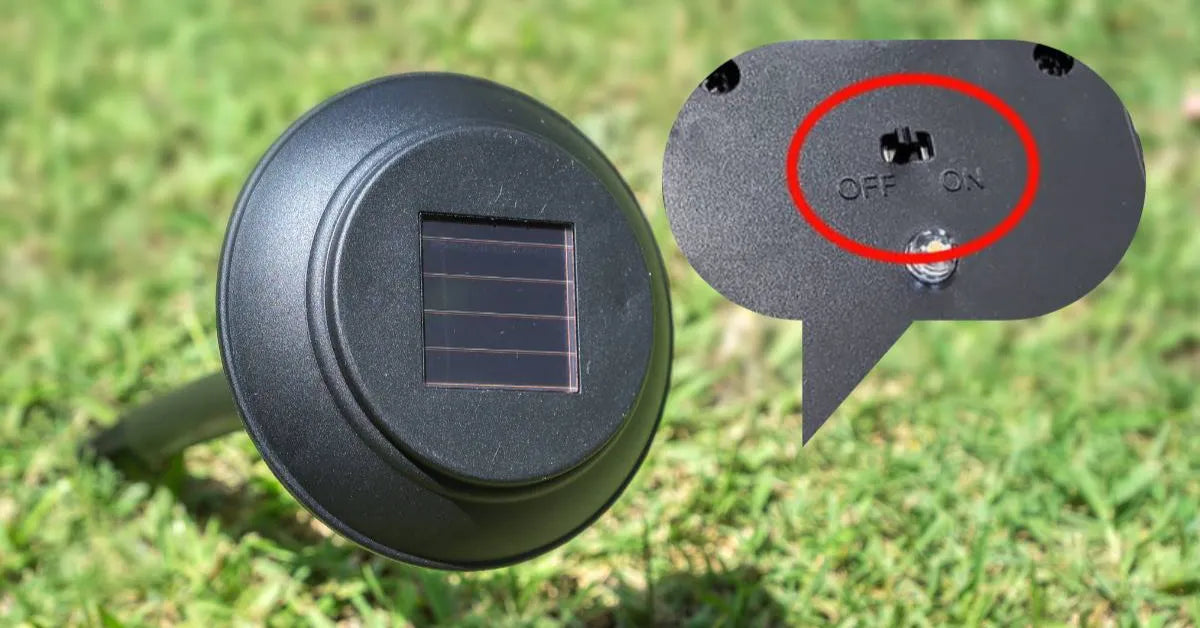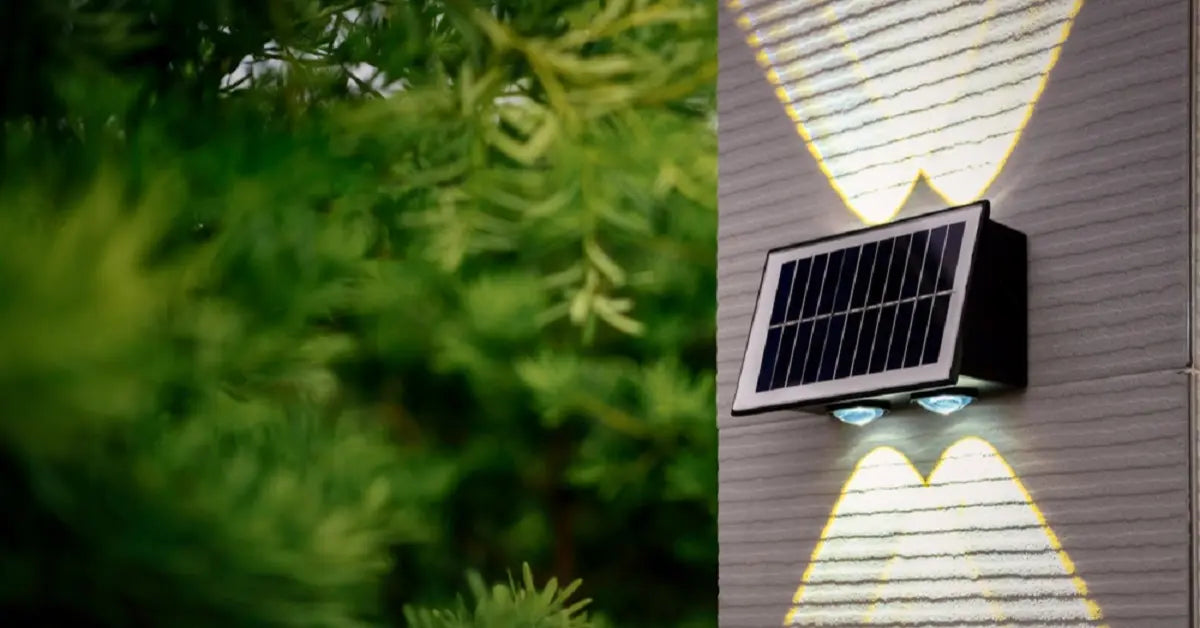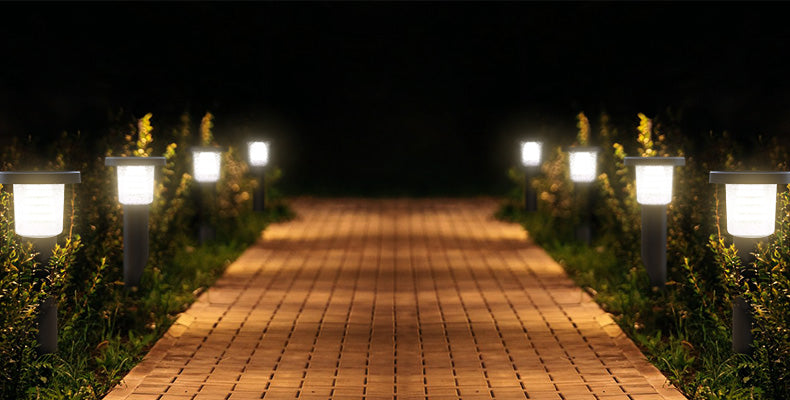Imagine having a mini power plant right in your backyard. That's essentially what a solar light is.
These ingenious devices are self-contained energy systems that drink up sunshine during the day and transform it into beautiful illumination at night. No messy wiring, no confusing electrical work, no surprise utility bills.
Here at intelamp, we've dedicated ourselves to pushing solar technology forward while making it accessible to everyone. Whether you're lighting a garden path or securing your entire property, understanding how these systems work helps you make smarter choices.
Let's break down exactly what makes these lights tick.
The Core: What Is a Solar Light? The Official Definition

A solar light is a lighting system powered entirely by the sun. Think of it as a completely independent lighting solution that never needs to plug into your wall.
These portable fixtures combine LED lamps, photovoltaic solar panels, and rechargeable batteries into one coordinated system. The beauty lies in their simplicity: they capture solar radiation during daylight hours and convert it into electrical energy for nighttime use.
Because they generate their own power, solar lights require absolutely no wires connecting to your home's electrical grid. This wireless freedom makes them perfect for illuminating gardens, pathways, driveways, and any outdoor space where running traditional electrical lines would be expensive or impractical.
The 4 Key Components Inside Every Solar Light

Understanding what's under the hood helps you appreciate why quality matters. Every solar light contains four essential components working in perfect harmony.
1. Solar Panel (Photovoltaic Cell)
This is your light's energy harvester—think of it like a sponge that soaks up sunlight. The panel converts sunlight directly into electrical current through something called the photovoltaic effect.
Premium solar lights use monocrystalline silicon panels. These dark, uniform panels are the most efficient type available, capturing more energy from the same amount of sunlight than cheaper alternatives.
2. Rechargeable Battery
The battery acts as your light's water tank, storing all that collected solar energy for later use. During the day, it fills up with DC electricity from the solar panel.
Common battery types include NiMH and lithium-ion (Li-ion). The best commercial-grade systems use LiFePO₄ batteries, which can last 8+ years and handle deep charge-discharge cycles without degrading quickly.
3. Control Electronics (Charge Controller and Sensor)
This circuitry is the brain of your solar light. It manages two critical jobs simultaneously.
First, it prevents your battery from overcharging during the day or discharging too much at night, which would damage it. Second, it includes a light sensor that detects when darkness falls, automatically switching your LED on and off.
4. LED Light Fixture
The LED (Light Emitting Diode) is your actual light source. LEDs were chosen for solar applications for good reason—they're incredibly efficient.
These tiny powerhouses generate light up to 90% more efficiently than old incandescent bulbs. This means your stored battery power goes much further, providing longer illumination from the same amount of collected sunlight.
How a Solar Light Works: A Simple Step-by-Step Guide

The magic of solar lighting happens in two elegant cycles that repeat every 24 hours.
Charging Cycle (Daytime)
When morning sunlight hits your solar panel, photovoltaic cells inside absorb photons from the light. This absorption excites electrons in the silicon material, creating an electrical current.
That DC electricity flows through wiring to the control circuitry, which carefully directs it into the rechargeable battery. Meanwhile, the photo sensor detects daylight and keeps the LED turned off, ensuring every drop of energy goes toward charging.
Illumination Cycle (Nighttime)
As dusk arrives and light levels drop, the photo sensor detects the darkness. The control circuitry responds by activating the LED, drawing stored power from the battery.
Your light shines steadily through the night until dawn approaches and the cycle begins again. For a deeper understanding of the photovoltaic process and energy conversion, check out our detailed guide on the science of how solar lights work.
Where Can You Use Solar Lights? Common Applications

Solar lighting has become incredibly versatile, adapting to both residential and commercial needs.
Garden and Pathway Illumination
Solar garden lights rank among the most popular outdoor lighting choices. They add both beauty and safety to walkways, patios, flower beds, and decks.
These fixtures enhance your home's curb appeal while preventing trips and falls after dark. Installation takes minutes—just stake them into the ground and let the sun do the rest.
Street and Parking Lights
Solar street lamps illuminate public spaces without connecting to the central power grid. They're especially valuable in areas where trenching for electrical lines would be prohibitively expensive.
Municipalities use them for streets, sidewalks, and parking lots, saving taxpayer money on both installation and ongoing electricity costs.
Security and Floodlights
Motion-activated solar floodlights provide robust security lighting for yards, garages, driveways, and commercial properties. They conserve battery power by staying dim or off until movement triggers them.
This smart approach means your lights shine brightest exactly when you need them most, while still maintaining enough charge for all-night monitoring.
Decorative and Special Use
The solar lighting category extends far beyond basic illumination. Solar string lights create festive atmospheres for outdoor gatherings.
You'll also find solar candles for ambiance, portable camping lights, traffic signals for remote highways, and emergency lighting for areas with unreliable grid electricity. The applications continue expanding as the technology improves.
The Evolution of Solar Lighting: From Simple Paths to Smart Security

Solar lighting has transformed dramatically from those early decorative garden stakes to today's sophisticated security systems.
Basic vs. Advanced: The Rise of Smart Features
Basic solar garden lights remain simple, self-contained units—panel, battery, and LED all in one compact housing. They work fine for decorative purposes and gentle pathway lighting.
Modern advanced solar systems have evolved far beyond these basics. They integrate high-quality LiFePO₄ batteries lasting 8+ years, intelligent control circuitry, and motion sensors that optimize energy use by dimming until someone passes by.
Housing materials have dramatically improved too. Premium products now offer IP68 or IK10 ratings, providing superior protection against dust, water intrusion, and physical impacts.
Introducing Linkable Technology: Creating a Network of Light

The latest breakthrough in solar lighting moves beyond individual, isolated fixtures. Advanced systems now feature separate solar panels connected by cables, allowing you to place the panel in the sunniest spot while positioning lights wherever you need them.
The newest iteration takes this concept even further with linkable technology. Multiple fixtures communicate and synchronize their operation, creating a unified security network across your entire property.
Consider advanced systems like Intelamp's Linkable Flood Lights as prime examples of this evolution. These systems feature a separate motion sensor case that can be strategically positioned for optimal detection, rather than being permanently attached to the light itself.
The linkable design allows multiple units to work together as an intelligent security network. When one sensor detects motion, all connected lights can respond simultaneously, creating comprehensive coverage that isolated units simply cannot match.
With a robust 12,000mAh battery and a generous 16.4ft cable for optimal panel placement, these systems ensure maximum solar charging while positioning lights exactly where you need them. The IP65 weather-resistant housing protects against rain and dust, making them reliable year-round security solutions.
Explore the Possibilities of Modern Outdoor Lighting
Understanding these core components and operational cycles empowers you to maximize performance and select truly quality products. The difference between a basic decorative light and an advanced security system comes down to thoughtful engineering.
Whether you're illuminating a simple garden path or designing an extensive interconnected security system, modern solar technology offers sustainable, efficient solutions for virtually any outdoor space. Explore our full range of solar outdoor lights to see how this technology adapts to different designs and applications.
FAQs
What is the downside of solar lights?
Solar lights do have some limitations worth considering. The initial purchase cost typically runs higher than traditional plug-in lighting.
Performance depends heavily on available sunlight. If your panels get frequently shaded, covered with dirt, or if you live somewhere with long overcast winters, the battery may not fully charge, leading to reduced nighttime runtime.
Additionally, batteries and electronic components eventually need disposal. They contain materials like lithium and cadmium that require proper recycling to prevent environmental contamination.
How do solar lights turn on at night?
Solar lights turn on automatically through a photo sensor (photoresistor) built into the control electronics. This sensor continuously monitors ambient light levels.
When daylight diminishes to a preset threshold at dusk, the sensor signals the controller circuit to draw power from the battery and activate the LED. No switches, no timers, no intervention needed.
Do solar lights need sun or just light?
Solar lights function best in direct sunlight—typically needing 6 to 8 hours for optimal charging. However, they can operate with indirect light too.
Solar cells absorb photons from any light source to create electrical current. Quality units charge effectively even from reflected light or during cloudy days, though efficiency drops compared to direct sunshine.
The key is placing your panels where they receive maximum light exposure throughout the day.
Do solar lights need electricity?
Absolutely not. Solar lights are completely self-sufficient systems that never need connection to your home's electrical grid.
They generate their own DC electrical energy from sunlight through the photovoltaic effect, then store that energy in an internal rechargeable battery. This independence makes them ideal for off-grid locations, remote properties, or anywhere you want to avoid the hassle and expense of running electrical wiring.
More Resources
How Do Solar Lights Work? The Ultimate Simple Step-by-Step Guide
How to Charge Solar Lights Without Sun: 7 Methods + Ultimate Solution
Do Solar Lights Need Direct Sunlight? The Complete 2025 Answer



